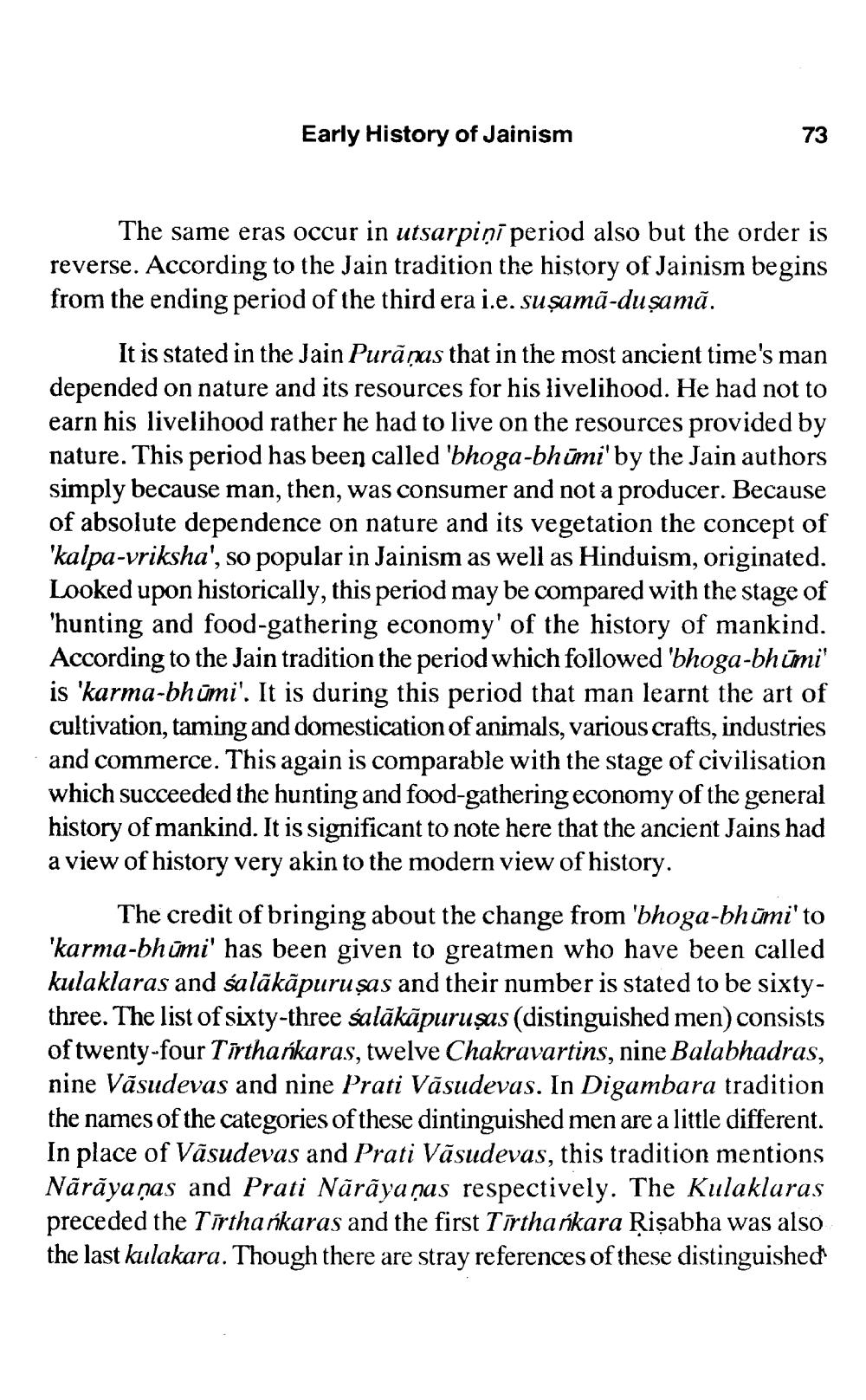________________
Early History of Jainism
73
The same eras occur in utsarpiņi period also but the order is reverse. According to the Jain tradition the history of Jainism begins from the ending period of the third era i.e. suşamā-duşamă.
It is stated in the Jain Purā ņas that in the most ancient time's man depended on nature and its resources for his livelihood. He had not to earn his livelihood rather he had to live on the resources provided by nature. This period has been called 'bhoga-bhūmi' by the Jain authors simply because man, then, was consumer and not a producer. Because of absolute dependence on nature and its vegetation the concept of 'kalpa-vriksha', so popular in Jainism as well as Hinduism, originated. Looked upon historically, this period may be compared with the stage of 'hunting and food-gathering economy' of the history of mankind. According to the Jain tradition the period which followed 'bhoga-bhūmi' is 'karma-bh ūmi'. It is during this period that man learnt the art of cultivation, taming and domestication of animals, various crafts, industries and commerce. This again is comparable with the stage of civilisation which succeeded the hunting and food-gathering economy of the general history of mankind. It is significant to note here that the ancient Jains had a view of history very akin to the modern view of history.
The credit of bringing about the change from 'bhoga-bhūmi' to 'karma-bhūmi' has been given to greatmen who have been called kulaklaras and salākāpuru şas and their number is stated to be sixtythree. The list of sixty-three salākāpuruşas (distinguished men) consists of twenty-four Tirthankaras, twelve Chakravartins, nine Balabhadras, nine Võsudevas and nine Prati Vasudevas. In Digambara tradition the names of the categories of these dintinguished men are a little different. In place of Vāsudevas and Prati Vāsudevas, this tradition mentions Nārāyaṇas and Prati Nārāya ņas respectively. The Kulaklaras preceded the Tirtharkaras and the first Tirtharíkara Rișabha was also the last kulakara. Though there are stray references of these distinguished




